Growing automation and market relationships will mean regulatory change is only part of the story. Dan Barnes investigates.
Plans to make the US$543 billion-a-day US government debt market more transparent could run aground in a political climate angled against more regulation.
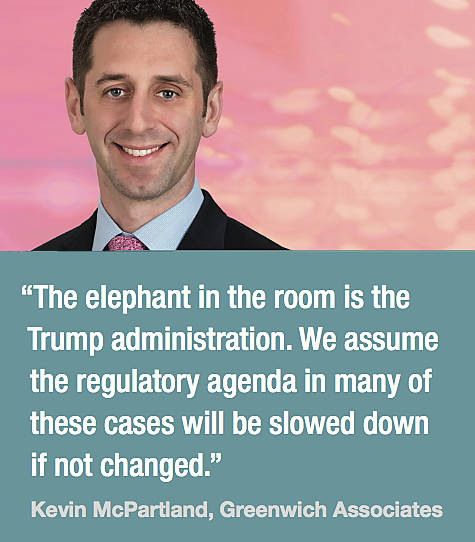 “The elephant in the room is the Trump administration,” says Kevin McPartland, at analyst house Greenwich Associates. “We assume the regulatory agenda in many of these cases will be slowed down if not changed. I suspect broader reporting, more public reporting still seems likely at some point, but implementation of that will probably take a bit longer than expected.”
“The elephant in the room is the Trump administration,” says Kevin McPartland, at analyst house Greenwich Associates. “We assume the regulatory agenda in many of these cases will be slowed down if not changed. I suspect broader reporting, more public reporting still seems likely at some point, but implementation of that will probably take a bit longer than expected.”
If the reforms go through, members of the Financial Industry Regulatory Authority (FINRA) will be required to report transactions executed in Treasuries to the Trade Reporting and Compliance Engine (TRACE) from 10 July 2017. There is also a proposal for the Federal Reserve Board (FRB) to collect data from banks for secondary market transactions in US Treasury securities, with FINRA as a collection agent, to ensure that non-FINRA firms are captured.
Further potential developments – similar to those imposed on the equity market after it experienced a flash crash on 6 May 2010 – have been informally discussed, ranging from public dissemination of data to the imposition of kill switches or circuit breakers.
The driver for regulatory reform was the US Treasuries market’s own flash event on 15 October 2014. It saw the yield on the ten-year note fall 34 basis points from 2.2% down to 1.86% – a 52 week low – before rebounding for the end of day, according to data from Bloomberg. Treasury futures on the CME hit nearly 1.6 million trades that day, having broken a ceiling of 800,000 trades on only three occasions before, according to data from trading analyst firm Nanex.
No regulatory agency had direct responsibility for market function or any oversight. The investigation into the event required a Joint Staff Report across multiple agencies and was unable to pinpoint a cause.
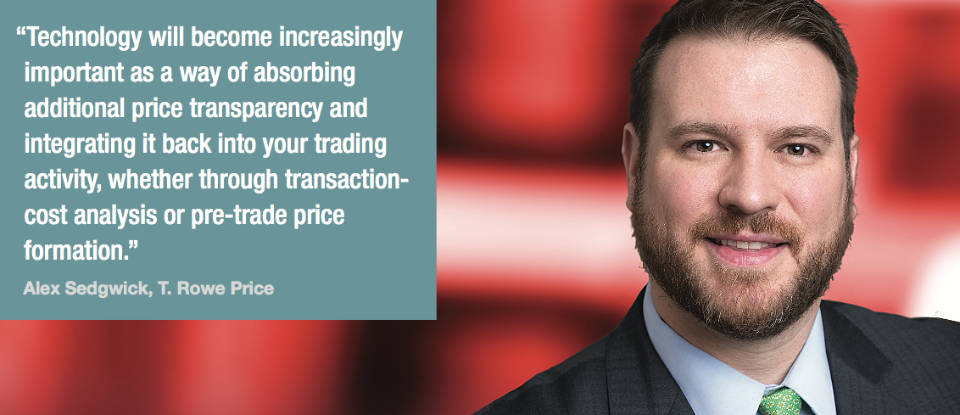
“When you are looking at the flash event in the Treasuries space, what concerns me is the inability to arrive at a definitive understanding of what happened and the corresponding causes based on market data limitations,” says Alex Sedgwick, head of Fixed Income Market Structure & Electronic Trading at asset manager T. Rowe Price. “That in and of itself is troubling. We’re supportive of transparency generally, but particularly for the regulatory community, giving it the opportunity to understand what has happened during severe market dislocations.”
Turning on the light
In Treasuries there are two very distinct markets. The dealer-to-dealer (D2D) market is highly electronic with interdealer market BrokerTec running about 70% of this business, approximately US$160 billion in notional volume traded daily in the 12 months ending August 2016, according to the Greenwich Associates report, New Landscape in U.S. Treasury Trading Benefits the Buy Side. Nasdaq Fixed Income – formerly eSpeed – is the market’s second largest player.
High-frequency trading firms have long made up a good proportion of interdealer volume, around 55% on BrokerTec in 2012 according to the firm’s Q2 earnings call that year and 55-60% in 2014, according to the multiagency report into the 2014 flash event.
The dealer-to-client (D2C) market, by contrast. is 49% electronic, according to Greenwich Associates, largely run through the Bloomberg and Tradeweb platforms. However, for some buy-side firms the level is much higher.
“Today around 90% of our treasuries trading is electronic, a very small amount is voice,” said Mihir Worah, chief investment officer, Asset Allocation and Real Return for asset manager Pimco, speaking at the Second Annual Conference for The Evolving Structure of the U.S. Treasury Market, on 24 October 2016. “We need to go through broker-dealers right now but even the trading that we do through them, 70-80% of them is auto-quoted. So we are moving towards full automation whether we like it or not.”
The increasingly agency-like nature of the business is also leading to a debate around the blurring of lines between the D2D and D2C market. Greater connectivity between platforms or participants could potentially increase automated liquidity and order routing. Some platforms like Liquidity Edge are trying to bridge that divide and more traditional interdealer markets are also seeing the appeal.
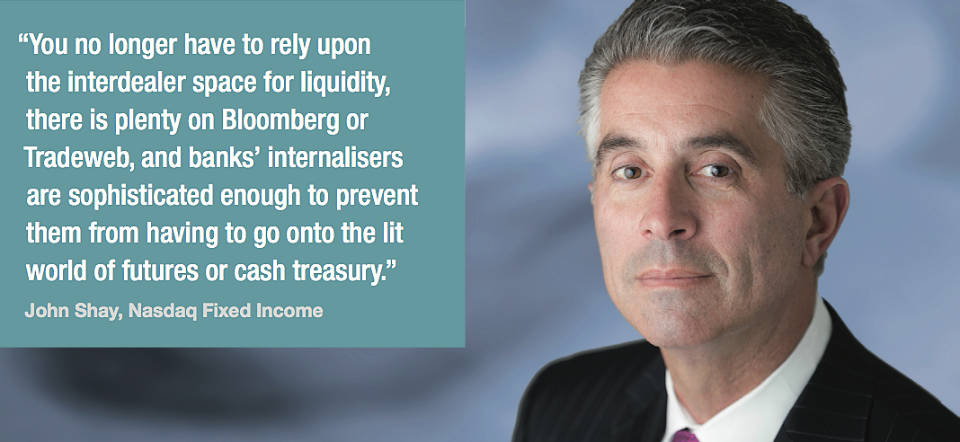
“You no longer have to rely upon the interdealer space for liquidity, there is plenty on Bloomberg or Tradeweb, and banks’ internalisers are sophisticated enough to prevent them from having to go onto the lit world of futures or cash treasury,” says John Shay, global head of Fixed Income and Commodities at Nasdaq. “Why not help this continue to grow by giving Nasdaq Fixed Income the ability to trade or price directly into these bank aggregators.”
BrokerTec has been exploring sponsored access models, to facilitate buy-side firms’ access to liquidity even where dealers are not able to take risk. BrokerTec Direct Phase 2 is currently underway, an initiative focused on bilateral trading and expanding the BrokerTec customer base, while introducing traditional and new D2C methodologies for trading.
For buy-side firms seeking to engage in the market outside of a traditional D2C model, careful consideration would have to be given to the new relationships, responsibilities and risks that might create.
Sedgwick says, “It is important to think about how liquidity provision differs based on the type of provider and their market making strategy – we are vigilant about changes in the market structure and continue to educate ourselves as things evolve.”
Fat trigger finger
While markets become more sophisticated, they lack the rules that make disruptive trading illegal, as found in equity and futures markets. The only checks are the controls of the trading venues themselves.
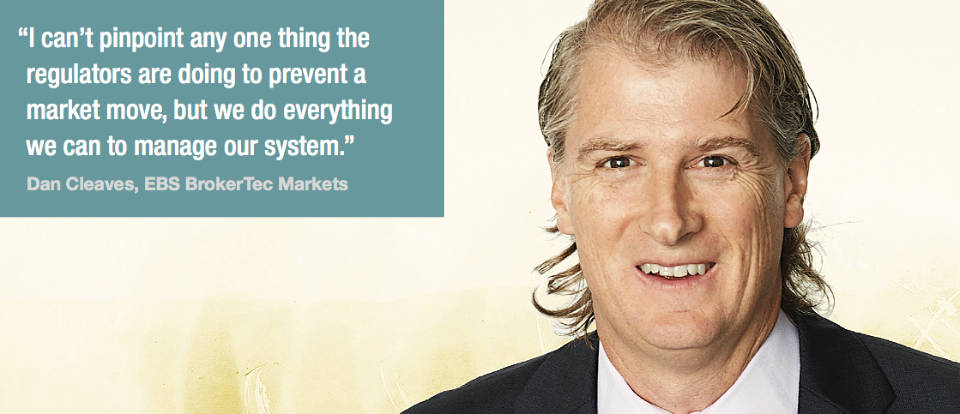
“I can’t pinpoint any one thing the regulators are doing to prevent a market move, but we do everything we can to manage our system,” says Dan Cleaves, Co-Head of EBS BrokerTec Markets. “If we see a situation where we see a trader or a firm that is disruptive to our market place and we have to intervene, we absolutely will. If we have to suspend a user, a firm or a security to bring back the integrity of the marketplace, we will do that too.”
Nasdaq Fixed Income likewise has checks and measures to impede fat finger errors and to control rogue behaviour.
Shay says, “During periods of extreme volatility it becomes more of an exercise, so events like those on October 2014 are when it gets slightly more tricky. Although it did create years’ worth of regulatory response and joint staff reports the markets, shockingly, behaved smoothly without many noticeable breaks.”
However it is neither platform’s role to capture cross-platform or cross-instrument activity, which could enable them to observe more sophisticated abuse. Speaking at the Second Annual Conference for The Evolving Structure of the U.S. Treasury Market, White voiced concern that the unbroken trading on 15 October 2016 could be seen as a problem as much as an effect of well-functioning markets.
“The kind of trading described in the Joint Staff Report is troubling because it suggests a destabilising short-term trading strategy during a period of market weakness,” she warned.
Since the Commodity and Futures Trading Commission’s identified a single futures trader as the trigger for the 2010 equities event, questions about potential triggers in the Treasuries market will remain open.
New insight
Enhanced transparency will go some way to mitigating the risk of disorderly markets. White spoke in October 2016 about an anti-disruptive trading rule and cited public transparency as “the next critical step to consider”, an issue the SEC is working with other regulators to make work.
Shay says, “I think the price transparency and reporting that have come out of it is a start. In the last 10 years in Treasuries, a lot more discovery and execution is happening on the RFQ vendors, which are completely in the dark.”
Providing transparency on individual trade details in the rates market is in some ways less controversial than for credit, notes Sedgwick.
“There are a variety of reasons why you might be trading treasuries, such as collateral, and hedging. In credit, investors are implicitly expressing a view on a specific issuer or bond,” he says. “There is however sensitivity around full transparency into the size of each trade.”
A key concern would be that full disclosure on large trades could create a ‘winner’s curse’ for liquidity providers in over-the-counter markets.
He says, “It is encouraging that US regulators have publicly stated that they are very aware of that issue and are considering a number of options similar to the way TRACE handles large credit trades through capped trade sizes.”
Speaking at the Fed event in 2016, Gerald Pucci, head of North American rates trading and global head of repo at BlackRock said the impact on liquidity would be tough to predict.
“I think it’s almost impossible to measure any forecastable change in a vacuum,” he said. “The global managers out there will be hampered by a shortened timeframe of price discovery. But the market will adapt, as it has in the past and will in the future.”
Rigour and rigidity
Further points that White raised were potentially more controversial. Applying the rigour of Regulation Systems, Compliance and Integrity (Reg SCI), intended to limit operational risk, or Regulation Alternative Trading Systems (Reg ATS), with its fair access rules, operational disclosures, and reporting requirements for significant markets to Treasuries would create additional workload for trading venues, albeit an evenly applied burden and one most market operators say they already meet the demands of.
“We manage global markets that report data real time,” says Shay. “If we are required by a regulator or central bank to [fulfil more reporting], we could adhere to that quite simply. It goes back to our superior technological footprint.”
Asking for high-frequency trading firms that make markets to be regulated as brokers, based on the premise that some are acting as broker-dealers without the regulation that sits around authorised broker-dealers, could have a massive effect on current trading models says Nicola Hunter, chief operations officer for Liquidity Edge.
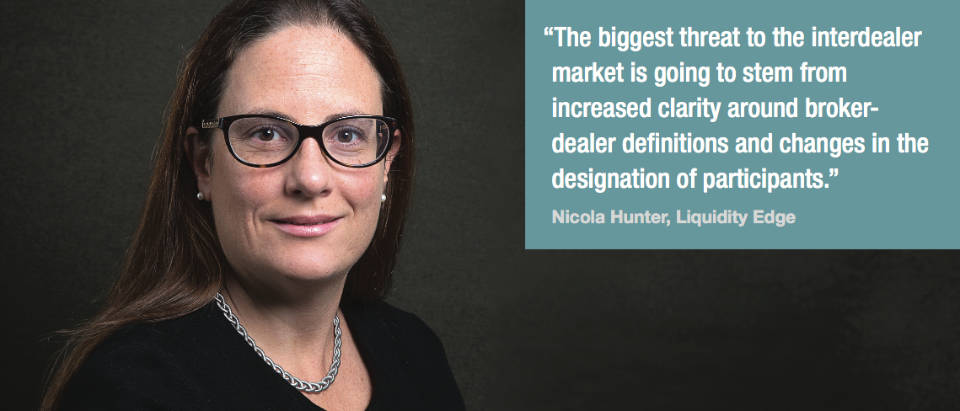
“The biggest threat to the interdealer market is going to stem from increased clarity around broker-dealer definitions and changes in the designation of participants,” she says. “That will have far reaching implications around liquidity and access to pricing, if these participants are not able to work in the market in the way they have been doing, without needing to re-register and change their capitalisation. That could have knock-on implications for buy-side traders seeking out new liquidity partnerships.”
More direct imports from the equity markets face considerable resistance. After the 2010 equity flash event markets imposed circuit breakers and kill switches to ensure that firms would not be exposed to the risks of markets spiralling out of control. Imposing those mechanisms on Treasuries markets would impede, not secure the market, argues Cleaves.
“US Treasuries and BrokerTec are the benchmark that traders use to trade, to mitigate risk and to handle customer inquiries,” he says. “We are arguably the largest fixed income market in the world. We’re also the hedge for many other asset classes – off-the-runs, agencies, interest rate swaps and corporate bonds are hedged against US Treasuries. So if we have a major market move, it is important that you have access to liquidity to hedge your risk. Saying that BrokerTec is going to shut down for ten minutes because it hit the level for a circuit breaker, is not going to work.”
On request from the SEC, FINRA filled four pages listing the existing FINRA rules that could be applied to government securities but are not yet, implying considerable change may be still be on the way. For the buy-side trading desk, getting to grips with the planned data releases will be the first step towards getting on the front foot in this changing market.
“You have to prepare to leverage that data,” says Sedgwick. “Technology will become increasingly important as a way of absorbing additional price transparency and integrating it back into your trading activity, whether through transaction-cost analysis or pre-trade price formation.”
©Markets Media Europe 2025





















